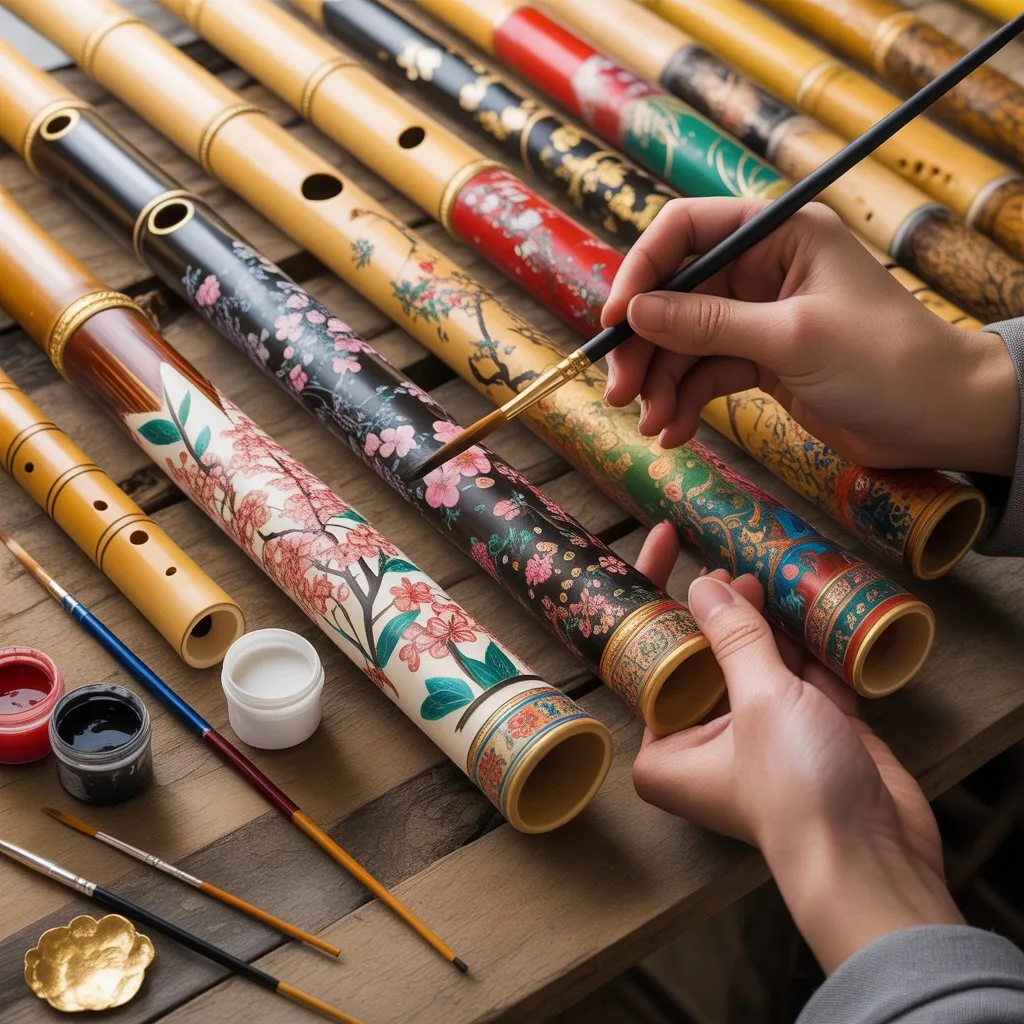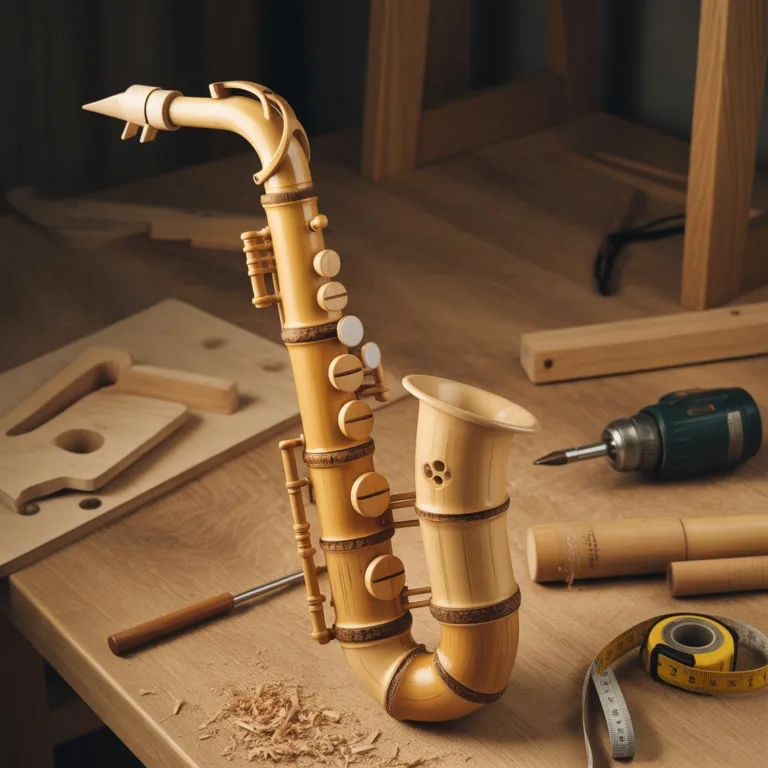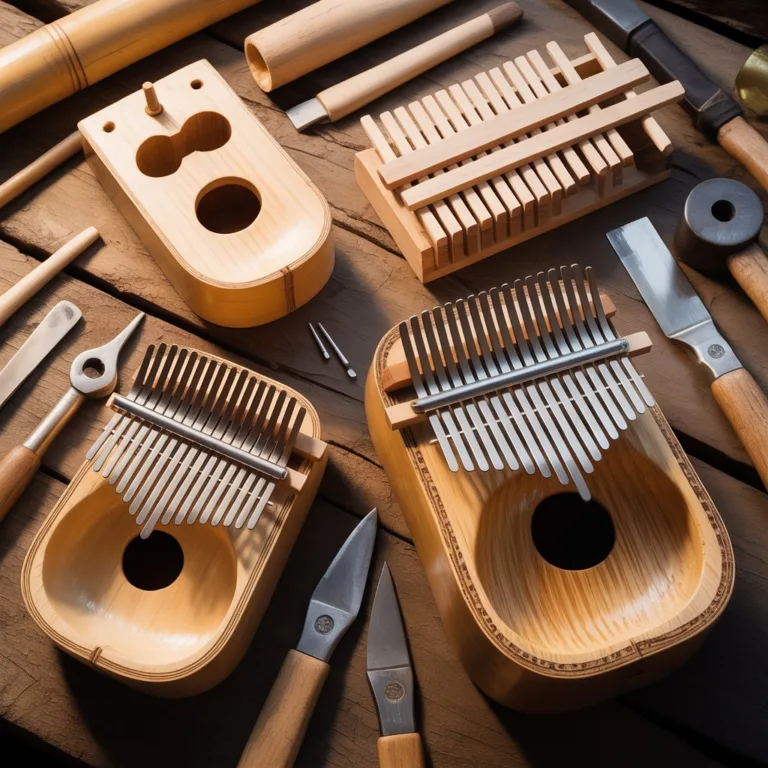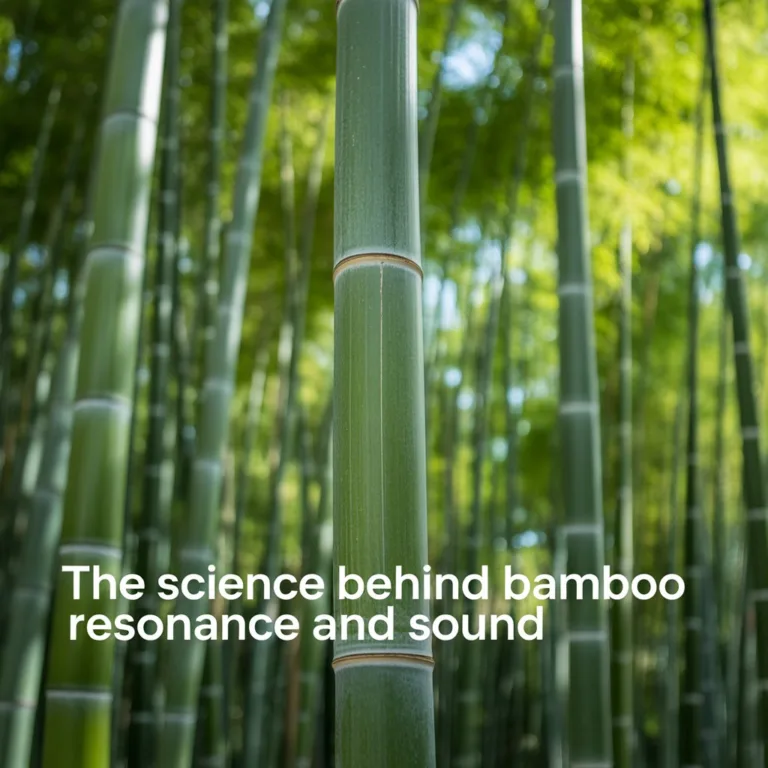Bamboo instruments hold a timeless charm that connects art, sound, and nature. Their soothing tones and organic textures make them an ideal canvas for artistic expression. Painting and decorating bamboo instruments transforms them from functional tools into pieces of cultural and creative identity. Whether crafted for music, education, or eco-conscious art projects, bamboo instruments can beautifully combine craftsmanship, sustainability, and personal style.

This exploration dives deep into the art of decorating bamboo instruments using sustainable materials and mindful techniques. It highlights both the creative and ecological aspects of this practice while offering insights into design, preservation, and community-based creativity.
The Harmony Between Music and Art
Across cultures, music and visual art have always been intertwined. From the painted drums of West Africa to the carved flutes of South America, artistic decoration enhances the spiritual and emotional resonance of musical instruments. For bamboo instruments — such as flutes, rattles, and drums — painting and embellishment not only elevate their aesthetic but also honor the cultural traditions that shaped them.
Decorating bamboo instruments serves many purposes. It expresses individuality, distinguishes instruments in ensembles, and pays tribute to local motifs and histories. More importantly, it embodies respect for nature, as artists transform a piece of living plant material into something that sings.
Choosing the Right Bamboo for Artistic Expression
The creative process begins long before the paintbrush touches the surface. Selecting the right type of bamboo ensures that the instrument not only sounds beautiful but also provides a durable and receptive surface for decoration.
Bamboo species such as Bambusa vulgaris or Dendrocalamus asper are ideal for crafting instruments because of their strong, smooth culms and consistent texture. Once harvested, the bamboo must be properly cured through air-drying or heating to prevent cracks and mold. Well-prepared bamboo offers a polished surface that absorbs pigments evenly, allowing colors to remain vibrant over time.
When working with bamboo for both sound and art, artisans strike a balance between preserving its acoustic properties and preparing it for visual design. Over-sanding or coating too heavily can muffle vibrations, while insufficient curing can cause warping.
Sustainable Materials for Decoration
Eco-friendly artistry lies at the heart of decorating bamboo instruments. Choosing non-toxic and sustainable materials ensures that the decoration process aligns with the natural spirit of bamboo.
- Natural Pigments: Derived from plants, minerals, and earth oxides, these pigments produce soft, organic tones. Turmeric yields a golden yellow, charcoal provides deep blacks, and indigo plants create serene blues.
- Eco Paints: Water-based or clay-based paints without volatile organic compounds (VOCs) are safer for both artisans and the environment.
- Natural Sealants: Instead of synthetic varnishes, artisans can use linseed oil, beeswax, or shellac to protect bamboo without sealing its pores completely.
- Recycled Accessories: Adding small recycled elements — such as fabric bands, paper beads, or coconut shell inlays — gives character to the design without waste.
Using sustainable materials transforms decoration into a conscious act of environmental respect, reinforcing bamboo’s role as a renewable resource.
Cultural Symbolism in Bamboo Instrument Art
Every culture has its unique visual language, and bamboo instruments often reflect that identity through colors, symbols, and patterns.
In Southeast Asia, flutes and xylophones are painted with floral or wave motifs representing harmony with nature. Indigenous groups in South America often decorate bamboo panpipes with geometric designs symbolizing unity and rhythm. In Africa, percussion instruments made from bamboo or calabash may feature tribal markings tied to ceremonies or storytelling traditions.
These decorations are not merely ornamental — they carry stories, prayers, and histories. For modern artisans and educators, learning about these cultural patterns fosters appreciation and authenticity in creative projects.
Preparing the Surface for Decoration
Before applying paints or designs, the bamboo surface must be clean, smooth, and ready to absorb color. A well-prepared surface ensures both the visual appeal and the durability of the artwork.
- Cleaning: Gently wipe the bamboo with a damp cloth to remove dust, oils, or residues. For aged bamboo, use fine sandpaper (around 400–600 grit) to lightly polish the surface.
- Sealing Pores: A thin layer of natural oil or diluted glue can act as a primer to prevent paint from bleeding into the bamboo fibers.
- Drying: Allow the bamboo to dry thoroughly in a shaded, ventilated space before painting. Direct sunlight can cause cracks or fading later.
This stage is crucial, as untreated bamboo may absorb moisture unevenly, leading to patchy colors or peeling paint.
Techniques for Painting Bamboo Instruments
The painting process is an opportunity for both artistic creativity and mindfulness. Depending on the style of the instrument, artisans can use a variety of sustainable and artistic techniques.
Brush Painting
Brushwork allows for detailed patterns, calligraphy, or landscape imagery. Traditional fine brushes made from natural fibers produce delicate lines, ideal for motifs inspired by nature such as leaves, waves, or clouds.
Stenciling and Block Printing
For repetitive designs, artisans may use stencils or carved wooden blocks dipped in natural dyes. This method ensures consistency while allowing creativity in color combinations.
Burnishing and Etching
Some artisans lightly burn the surface of bamboo with heated tools to create intricate etchings. Known as pyrography, this technique adds texture and a warm, rustic tone without the need for paint.
Tie-Dye and Dip-Dye Effects
Using plant-based dyes, bamboo can be partially dipped or wrapped with leaves to achieve organic gradient effects. These natural stains emphasize the plant origin of the material.
Each method allows artisans to bring personal stories to life on their instruments, turning them into wearable or playable works of art.
Combining Art and Function
The most successful decorations respect the function of the instrument. Bamboo flutes, for instance, must maintain smooth air passages and consistent weight distribution to preserve their tone. Painting should avoid the blowing holes, mouthpiece, and joints.
Similarly, for percussion instruments like bamboo drums, painted sections should not interfere with the skin tension or sound resonance. Artists often concentrate their decorations on the base, handle, or outer shell to complement — rather than alter — acoustic performance.
A good rule of thumb: the art should enhance the story of the instrument without changing its song.
Finishing Touches: Protection and Shine
After painting, bamboo instruments benefit from a protective coating. Natural oils or waxes are preferred, as they safeguard against moisture while keeping the surface breathable.
- Beeswax Polish: A thin coat of beeswax enhances the natural sheen and repels water.
- Linseed Oil Finish: Provides a subtle gloss and penetrates deeply to preserve the bamboo fibers.
- Shellac Layer: Creates a harder, glossy finish that is still biodegradable and safe for skin contact.
These finishes maintain the instrument’s organic texture and ensure longevity, even with regular use in performances or displays.
Educational and Therapeutic Uses
Decorating bamboo instruments is an engaging educational activity, ideal for schools, art workshops, and community programs. It encourages participants to explore sound, color, and sustainability together.
For children, painting their own bamboo instruments nurtures creativity and motor coordination. They also learn about plant materials, traditional crafts, and environmental stewardship.
In therapeutic settings, the process of painting and making music fosters relaxation and emotional expression. Many art therapists use bamboo instruments in mindfulness sessions, as the combination of tactile creation and gentle sound supports stress reduction.
This integration of visual and auditory creativity highlights the holistic benefits of eco-friendly art.
Showcasing the Finished Art
Once decorated, bamboo instruments can be displayed or used in performances. Artisans often organize community exhibitions to share their creations, fostering cultural pride and collaboration.
For home décor, painted bamboo flutes or percussion pieces make excellent wall hangings that carry both artistic and natural appeal. In music classes, decorated instruments inspire curiosity and encourage students to see beauty in sustainable materials.
Sharing the finished works — whether online or in local galleries — also helps preserve traditional techniques while introducing eco-conscious art to broader audiences.
Preserving Bamboo Art Over Time
To keep bamboo instruments vibrant and functional, proper care is essential:
- Store in a cool, dry place away from direct sunlight.
- Avoid prolonged exposure to humidity or water.
- Reapply natural oils every few months to maintain color and texture.
- Handle gently to prevent scratches or dents in the decorated surface.
When well maintained, a bamboo instrument can last for decades, continuing to delight both the eye and the ear.
Inspiration from Artisans Around the World
Artisans globally have elevated bamboo instrument decoration into an art form that bridges generations.
In Bali, artists carve and paint bamboo flutes with mythological scenes that honor local deities. In the Philippines, indigenous groups use natural dyes to paint tribal patterns on bamboo percussion. In South America, pan flutes decorated with bold geometric colors reflect the rhythms of Andean life.
Modern artisans have expanded this legacy by experimenting with minimalist designs, abstract art, and recycled pigments. Social media platforms and eco-design fairs now showcase bamboo instruments as both musical and visual masterpieces.
This global fusion of tradition and innovation demonstrates how cultural exchange continues to inspire sustainable artistry.
The Eco-Art Mindset
At its core, painting and decorating bamboo instruments is an act of harmony — between art, music, and the environment. Each brushstroke connects the artist to the earth’s rhythms, turning natural materials into expressions of beauty and sound.
Embracing eco-friendly materials and mindful craftsmanship ensures that art not only delights but also protects. As more artists and educators explore bamboo as a creative medium, they rediscover the joy of simplicity: transforming what grows in nature into something that sings from the heart.
Sustainability and art coexist beautifully when guided by respect for both craft and planet. Whether decorating a handmade flute or teaching children to paint small bamboo rattles, this practice reminds us that creativity thrives when we live in tune with nature.

Elena Mora is a creative educator and eco-craft enthusiast who specializes in bamboo musical instruments and sustainable toys for children. She believes that hands-on learning through play teaches kids about creativity, music, and environmental responsibility.



